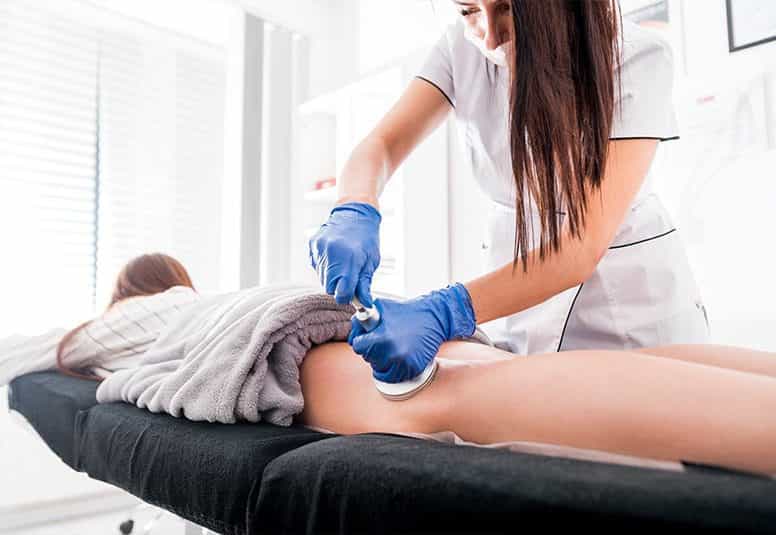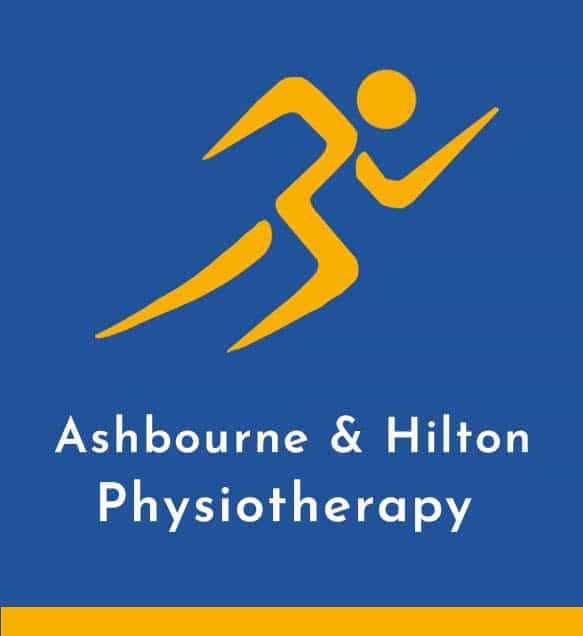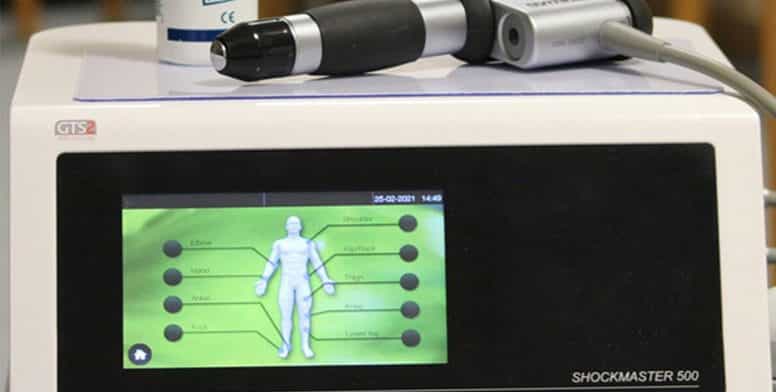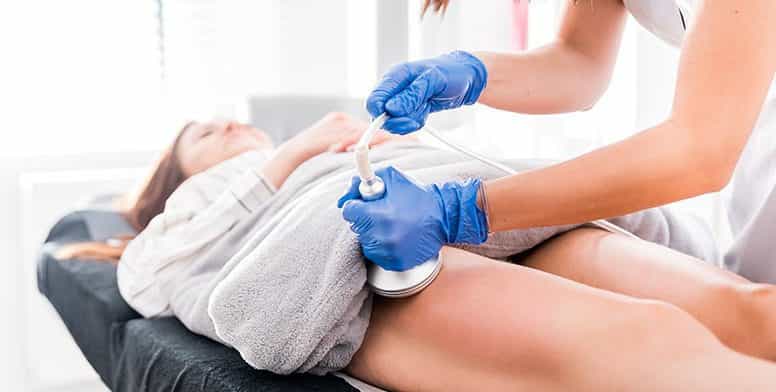History
Focal therapeutical shock waves were originally introduced as a non-invasive medical treatment in Germany over 30 years ago for eliminating kidney stones (lithotripsy).
Today the use of radial shock waves or extracorporeal radial shockwave therapy, (ESWT) has been successfully extended to other therapeutic and health applications and is now being widely used by physiotherapists to treat a variety of musculoskeletal conditions.
The effectiveness of the treatment modality for specific conditions has been reviewed and accepted by both NICE (UK National Institute for Health and Clinical Excellence) and FDA (US Food and Drug Administration).
What is Shockwave Therapy?
Shockwave Therapy is a non-invasive way of restarting the body’s natural healing processes.
Shockwave therapy, (ESWT or RESW,) uses low frequency acoustic energy waves. There are many examples of acoustically generated pressure waves in everyday life, like thunder after a lightening flash, or the energy felt after a bomb blast or simply the sound energy felt from loud music. In shockwave therapy the waves interact with the body’s tissues promoting the overall medical effects of accelerated tissue repair, cell growth, disruption of scar tissue, fragmentation of bony spurs and analgesia.
What conditions is Shockwave therapy used for?
Shockwave therapy is beneficial for patients with painful soft tissue (muscle, tendon, ligament) and bone conditions. The therapy can benefit those with sports or overuse injuries and those having physiotherapy for a range of complaints.
Most commonly, shockwave therapy is used to help ease the following conditions: –
- Achilles tendinopathy, (pain in the tendon at the back of the heel or in the tendon from the calf muscle to the back of the heel)
- Plantar Fasciitis, (pain under the sole of the foot)
- Iliotibial band syndrome, (pain that stretches from the outside of the hip down the outer thigh to the outside of the knee- caused by running and cycling)
- Patellofemoral tendinopathy, (runners or jumpers’ knee)
- Gluteal tendinopathy- pain at the back of the hip- common in runners.
- Bony heel spurs


How Many Sessions of Shockwave will I need?
Most patients require 3-4 sessions a week apart before significant pain relief is noticed and some larger more chronic conditions may need 5. Your therapist will usually arrange to see you again 2-3 months after the end of the course of treatment to see how you are getting on, at this point you may require 1 or 2 top up doses. It is worth remembering the effects of shockwave therapy continue to effect soft tissue changes weeks after the treatment
How much does it cost?
The first treatment including assessment cost £122 for a 45 min session. This way your therapist can assess if shockwave is appropriate and you can find out what the treatment feels like.
Then every follow up treatment after that is £73.
Is Shockwave Suitable for everyone?
Shockwave therapy is a safe, effective treatment if given in a professional setting, but there are circumstances where it is NOT advised and is not suitable if:
- You have a blood clotting disorder or are taking blood thinning or anticoagulant medication like over 75 mg of Aspirin, Warfarin, Clopidogrel or Riveroxiban.
- You have a nerve disorder.
- If you are pregnant.
- You have or have had any kind of bone cancer
- You have an infection in the area that needs treatment
- You have metal pins or plates in the area that needs treatment.
- You have had a steroid treatment in the area that need treatment in the last 12 weeks.
- You have taken a Non-steroidal anti-inflammatory in the 2 weeks prior to treatment- like Ibuprofen, Naproxen or Neurofen.
If you want to discuss Shockwave Therapy or have any questions about its suitability for your condition – Do not hesitate to contact the Clinic on 01335 344952
How the machine works.
The shock waves are generated by a ball bearing, (the bullet) traveling at high speed in a metal barrel, (gun barrel). The bullet is accelerated using compressed air and strikes an endplate which is in contact with the skin. From there the waves expand away from the endplate to the injured target tissues; the depth depending on the force or pressure and shape of the head used by the therapist. A water -based gel is used to ensure good contact and efficient transmission of the shocks from the end plate and into the patient’s tissues.
What is the success rate?
Clinical research demonstrates a 77% success rate across a range of conditions. So, it does not work for everyone, but does help most people even when other treatments have failed. So, if rest, ice, pain relief and stretches have not worked for you, why not try this non-invasive treatment carried out on an outpatient basis.
What to expect during Treatment?
You will be positioned comfortably on a couch and the area to be treated will be identified and gel applied. The probe or end plate of the gun is placed on your skin and the high intensity shocks are pulsed into the tissues. Each treatment takes about 5 minutes and can be quite noisy. Shock wave can be uncomfortable and to some, slightly painful, but your therapist can adjust the frequency and pressure of the shocks until you get used to it- most people tolerate the discomfort very well.
After Treatment
Some patients can feel sore afterwards, this is because the shockwaves have initiated an inflammatory reaction in the tissues and shows the treatment is working. If required, you can take over-the-counter painkillers like paracetamol, but avoid taking anti-inflammatories like ibuprofen or neurofen as these will interfere with the healing process. Do not use ice on the area. Other side effects can include redness, bruising, swelling and numbness but these should resolve within a few days. You can return to work as normal straight away. However, it is advised you do not do any strenuous exercise or pain provoking activity/ high impact exercise for at least 48 hours after your treatment.




